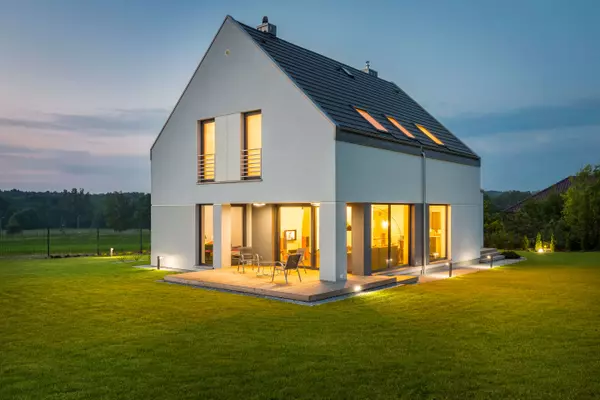Michael Smolens: Partisan harmony in Congress pushes big housing bill
It was a remarkable achievement in these hyper-partisan times: unanimous, bipartisan support in Congress to address one of the most pressing issues facing the nation.
Nearly two weeks ago, the Senate Banking, Housing, and Urban Affairs Committee passed a sweeping bill to address the shortage and high cost of housing. It was the first bipartisan markup of such a housing measure in more than a decade.
The bill has a ways to go, needing approval by the full Senate and the House. Changes are almost certain. But the partisan harmony on the banking committee suggests broad acceptance of the legislation, co-authored by Sen. Tim Scott, R-S.C., chairman of the committee, and Sen. Elizabeth Warren, D-Mass.
The bill’s provisions range from incentives to increase supply, rental and homeownership assistance, and subsidies for repairs, to making it easier to build modular or prefabricated units that could help lower costs.
It’s far from clear, of course, what impact the eventual bill would have on an affordable housing crisis plaguing many parts of the nation, should it pass Congress and gain President Donald Trump’s signature. Plenty of local, state and federal efforts to boost housing in the past have failed to live up to their promise.
But at least on the surface, it’s refreshing to see Congress unified on an issue of such high importance, when Republicans and Democrats seem constantly at war on other matters such as spending and tax cuts, immigration, redistricting and even the Jeffrey Epstein saga.
The Scott-Warren bill is called the ROAD to Housing Act, or officially “Renewing Opportunity in the American Dream to Housing Act of 2025,” showing Congress hasn’t lost its penchant for coming up with contorted acronyms.
There’s some synergy here with state housing policies and the big spending and tax cut bill Trump signed into law on July 4, though the latter is something of a mixed bag regarding housing.
In California, majority Democrats were joined by Republicans in recent years in passing numerous laws aimed at spurring more housing in hopes of reducing prices and are attempting to push more related bills through the Legislature.
But the legislation has yet to produce the housing bonanza supporters anticipated, even if they have resulted in more homes being built around the margin.
There’s further hope that the recent changes to the landmark California Environmental Quality Act, or CEQA, will unlock further development. However, critics question how much difference that will make in providing housing at the expense of potential setbacks to environmental protection.
The city of San Diego has marched forward with its own parallel streamlining efforts in recent years, and has seen an uptick in construction, particularly apartments and accessory dwelling units.
But the laws and ordinances have allowed some excessively large ADU projects and residential towers, leading to a growing backlash. Residents have expressed concerns that not only will the character of their neighborhoods be diminished, but the increased housing density will overburden the local infrastructure.
In the end, market forces — including the high cost of financing, materials, labor and land — still are key factors in housing construction, and government facilitation can only do so much about that.
Regarding Trump’s big bill, analysts suggest the housing components somewhat mirror the tax cuts: They’re likely to help higher-end buyers while not doing so much for lower-income residents and first-time home buyers.
Ed Fernandez, the president and CEO of exchange investment company 1031 Crowdfunding, told Newsweek the measure “would be incredibly productive” and “create a real estate boom again.”
Of particular note was raising the cap on the state and local tax (SALT) deduction to $40,000 from the previous $10,000 limit. That would disproportionally help high-income buyers in high-tax states like New York, New Jersey, Massachusetts and California.
There’s an expansion of the Low-Income Housing Tax Credit, but a narrowing as to which areas qualify to receive opportunity zone incentives. The termination of energy efficiency and solar panel credits could also make homes more costly.
Meanwhile, cuts and changes to programs at the Department of Housing and Urban Development put housing assistance for more than a million low-income Americans in jeopardy, according to The Associated Press.
The congressional ROAD to Housing bill is not seen as a cure-all, but the more than 40 provisions should boost the housing supply, to some degree. The measure provides incentives for small-dollar mortgage loans, and streamlines regulations, while making it easier to gain financing to rebuild or repair homes after natural disasters.
One intriguing aspect of the bill is to simplify construction of manufactured or modular housing by eliminating the federal requirement of a permanent chassis, or foundation, and expanding lending and financing options.
Manufactured housing consists of factory-built homes that are transported in one or more sections. As of now, it must be installed onto a permanent chassis, according to CNBC.
Regulations, local zoning and permitting, and concern from some trade unions have presented hurdles to widespread modular housing in California. However, CalMatters reported that modular apartment buildings are manufactured in assembly-line fashion at a factory in Vallejo.
For decades, advocates have suggested manufactured housing as a way to produce lower-cost homes, but past efforts have fallen flat.
Still, the lure remains, along with the attraction of all the streamlining, land-use and financing proposals encompassed in the pending federal bill and state and local laws over the years.
Hopefully, this all will have a big impact on making housing more affordable and attainable, eventually. If so, let’s not forget the bipartisan push that made it happen.
Categories
Recent Posts










GET MORE INFORMATION


